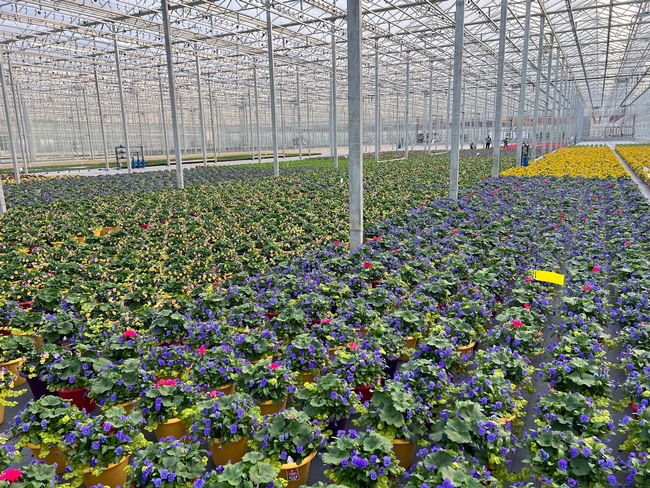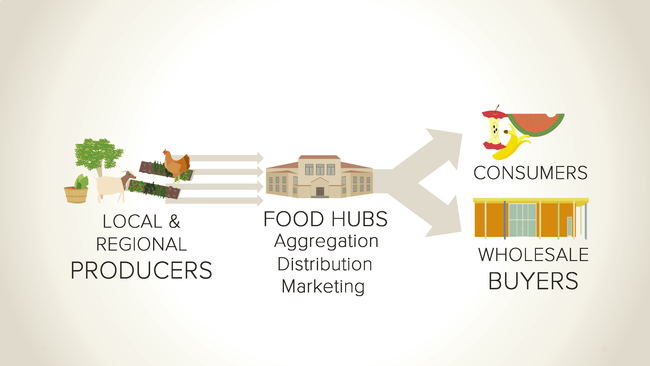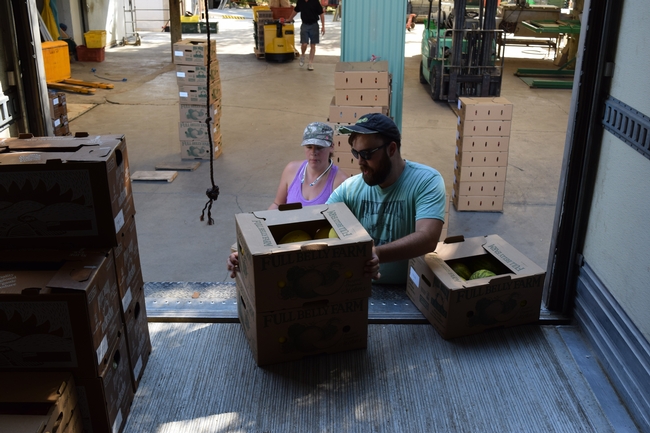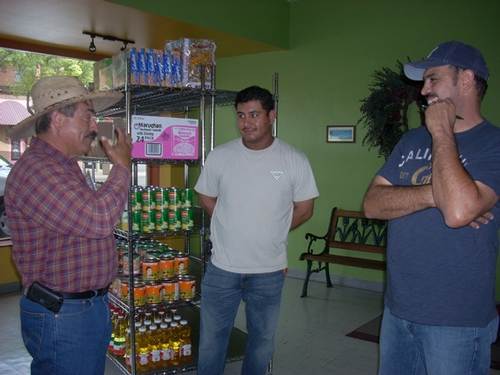Posts Tagged: growers
Growers invited to take indoor farming survey
Researchers seek insight on emerging controlled environment agriculture trends
Greenhouse operators are encouraged to participate in the 2023 State of Controlled Environment Agriculture survey. IUNU, a technology company that specializes in AI and computer vision solutions for the agriculture industry, and the University of California Agriculture and Natural Resources are conducting the survey to gain insights on emerging trends and challenges to share with the controlled environment agriculture industry.
The survey takes approximately 25 minutes to complete. All growers using CEA – greenhouse, high tunnel or indoor – are invited to participate. All data collected is confidential and shared only as anonymous trends. No identifying information is ever shared. Growers who participate will get early access to the survey results report and will get access to an exclusive webinar to discuss the results with the authors of the report.
The fourth State of CEA Survey can be completed at https://www.surveymonkey.com/r/FVXJSY9.
The report, first released in 2016, was formerly titled “State of Indoor Farming” and managed by Artemis, which was acquired by IUNU in 2021.
This year, IUNU has expanded the survey to include the different leading segments of the controlled environment agriculture industry: greenhouse fruit and vegetable, and greenhouse ornamental production.
UC ANR's VINE agrifood technology innovation program, Global Controlled Environment Agriculture Consortium (GCEAC), and UC Davis-led AI Institute for Next Generation Food Systems (AIFS) are collaborating on the report.
“An industry-led, market-driven approach to guiding innovation priorities and investments is critical as we consider the future of indoor farming,” said Gabe Youtsey, UC ANR chief innovation officer and co-founder of The VINE. “I'm thrilled to partner with IUNU on the development of this State of CEA report with our UC innovation teams from The VINE, GCEAC and AIFS to create a robust state of CEA report that will guide our CEA open innovation priorities this year.”
Since the survey launched in 2016, more than 500 growers have participated in the survey and more than 2 million people have downloaded the report. The industry reports have become one of the most widely circulated and respected sources of industry data.
"This report is a trusted resource for the industry and we're thrilled to bring it back in an expanded capacity,” Allison Kopf, IUNU chief growth officer, said. “Over the past year, we've seen a swell of news around our industry. This report will go deeper into those stories and share data on how companies are performing, big market opportunities, and the real challenges growers are facing.”
Past CEA reports are available for download at https://artemisag.com/guides_reports.
About IUNU
Founded in 2013 and headquartered in Seattle, IUNU aims to close the loop in greenhouse autonomy and is focused on being the world's leading controlled environment specialist. IUNU's flagship platform LUNA combines software with a variety of high-definition cameras – both fixed and mobile – and environmental sensors to keep track of the minutiae of plant growth and health in indoor ag settings. LUNA's goal is to turn commercial greenhouses into precise, predictable, demand-based manufacturers that optimize yield, labor and product quality. www.IUNU.com
About The VINE by UC ANR
The VINE is California's agriculture, food and biotech innovation network powered by the University of California Agriculture and Natural Resources. We believe that the state's continued prosperity rests on creation of more productive, sustainable and equitable food systems. Every day, we harness the power of open innovation to connect entrepreneurs to a broad network of public and private sector resources to enable them to grow and scale globally, build collaborations that catalyze the development of climate-smart technology-based solutions to solve industry challenges, and grow regional capacity to support global innovation as an economic opportunity – because our future, and the nation's, depends on it.
The Global Controlled Environment Agriculture Consortium – an initiative of The VINE – seeks to build a worldwide ecosystem to bring technology to market that addresses global challenges in food, health and sustainability. GCEAC is an open innovation partnership between industry, university and government sectors in the United States and The Netherlands, led from California.
#Collabatition: A new network of food hubs looks past competition to help each other succeed
In today's food system, large scale food distribution has become the standard way food moves from farm to market. The system works well to feed a lot of people, and has allowed us to eat tomatoes in December and send produce far distances while keeping it fresh. But the system is not without its sacrifices.
Through large scale food distribution, farmers can lose the ability to set their own prices, and small-scale farmers can be cut out from the system for not being able to fill high volume orders. On the consumer side, this system can make local food harder to find and identify. Institutions interested in providing locally grown produce at their cafeterias may need the efficiency buying from large distributors provides, but find they're unable to source food the way they'd like.
Food hubs are businesses popping up around California and the U.S. trying to create a food distribution system that supports regional food systems. By aggregating food from small and mid-sized farms and selling it to large businesses and institutions, food hubs are able to help realize the consumer's desire for local food while helping small and mid-sized farmers succeed by connecting them with buyers who may otherwise be out of reach.
To help ease the challenge of starting these unique businesses, a network of food hubs in California, organized by the UC Sustainable Agriculture Research and Education Program, is learning how to conquer their business start-up and growth challenges together.
Food hubs as business innovators
Thomas Nelson, president and co-founder of Capay Valley Farm Shop, a food hub in California's Capay Valley, has built his business around a vision of a thriving regional food system where small farmers succeed. Thomas purchases food from 50 different farms in and near the Capay Valley, and sells primarily to corporate food service in the Bay Area.
“Our model is farmer-focused," Thomas said. “Farmers set the price for their food, and we add on our margin. We help tell the story of the farms so that their identity is kept throughout the supply chain. We let our buyers know about new products or new farms we're working with, and our buyers ask for produce by farm name.”
Thomas works closely with his 50 farmers, helping them plan their crops to best meet the demands of their clients, and working with the beginning farmers to get them through the hurdle of learning how to sell wholesale.
“It can be a challenge to accurately predict the next harvest,” Thomas said. “And it's our responsibility to mitigate some of those risks for the buyers as much as possible, but our buyers also get it. The reason they choose to work with the food hubs is they want to support local farms. What really makes this work are shared values.”
#Collabatition
Thomas is one member of a new statewide food hubs network created in collaboration with the UC Sustainable Agriculture Research and Education Program (UC SAREP), a statewide program of UC Agriculture and Natural Resources whose work includes improving marketing opportunities for small farmers. The network, funded in part by the UC Global Food Initiative, brings together food hub mangers to learn from one another and collectively pave the way for successful food hubs in California.
The food hub business model is a relatively young one, few food hubs existed in the United States before 2008. Today, hundreds are in business across the country, and they're all trying to figure out similar things: how to best work with farmers and customers to make the business model effective, how to run a food business in a regulation-laden environment, how to increase efficiency without sacrificing price, quality, and the value of local agriculture.
“Food hubs are really working with farmers in their local areas to help them reach markets beyond selling directly at the farmers' market,” said Gwenaël Engelskirchen, who leads the food hub projects at UC SAREP. “We brought a group of northern California food hubs together for their first convening in February of 2015 and they realized that they all had a lot to learn from each other. They realized that there's opportunity in them working together.”
There's a hashtag on Twitter for what they're doing: #collabatition, or, collaborating with your competition. UC SAREP acts as the organizing body for the food hub network — coordinating resources to help the hubs wade through the many rules and regulations of operating a food business, and working through the visions of their own businesses and the network collectively.
“This is a newish space, so there is a ton to learn and share,” Thomas said. “By having a network we are supporting each other on the journey of growing successful businesses that serve local farms and regional buyers. Working with UC SAREP, we can have conversations with larger buyers that would be hard for us independently to access.”
One of those potential larger buyers is an organization close to home — the kitchens of the University of California.
“UC SAREP plans to interview kitchen directors from UC campuses all around the state to see what keeps them from buying local food, and whether the food hub business model is one that can support the desire they have to incorporate local food into their kitchens,” Gwenaël said.
And past successes show that food hubs can play an important role in linking UC dining programs with local farms. According to a recent report from the UC Global Food Initiative, through a relationship with the food hub Harvest Santa Barbara, UC Santa Barbara is currently able to source 23 percent of its produce from within 150 miles of campus.
“By linking UC food buyers with food hubs, we want to see if that success can be replicated around California," Gwenaël said. "In 2014, UC Santa Barbara alone served nearly three million meals, so the entire UC becoming a local produce buyer could be a major boon to regional food systems.”
The UC SAREP website offers a number of resources that can assist food hubs as well as farmers looking to see their produce wholesale. Find those resources here. Stay tuned for an upcoming article on food hubs in the next issue of California Agriculture journal.
Local farms please new moms and kids
You may have noticed changes lately in some little food stores tucked into your neighborhood strip mall or main street, stores with names like "Prime Time Nutrition" or "Fiesta Nutrition." These stores are now offering enticing displays of fresh fruits and vegetables along with the infant formula, breakfast cereal, eggs, cheese and other foods that have been offered to mothers, infants and children through the WIC program since 1972.
The UC Small Farm Program and Cooperative Extension advisors in three California counties are piloting a new "Farm to WIC Program" with the stores to make sure that some of the fresh produce on the shelves comes directly from small-scale local growers, helping low-income families to participate in USDA's "Know Your Farmer, Know Your Food" campaign.
The mission of the Special Supplemental Nutrition Program for Women, Infants, and Children (WIC) is to safeguard the health of low-income women, infants and children up to age 5 who are at nutrition risk. The program provides nutritional education and vouchers for supplemental foods to qualifying families. By 2002 almost half of the infants and about one quarter of children ages 1 to 4 in the country participated. The vouchers can be redeemed at most large grocery stores, but many WIC participants prefer to shop with their vouchers at the small, privately-owned WIC-only stores that have sprung up since 2000, carrying only WIC foods and catering primarily to WIC participants.
In October 2009, the WIC program began including vouchers for fresh fruits and vegetables in the monthly allotment to all participating families. This addition meant that all WIC-authorized retailers had to begin offering a variety of fresh fruits and vegetables to their customers - no problem for traditional supermarkets, but a big change for the smaller WIC-only stores. All of a sudden they were in a new business, the produce business. The store owners now have to understand their customers' fresh produce preferences as well as safe handling of perishable products that don't arrive in the store with "sell-by" dates stamped on them.
With funding from the California Department of Food and Agriculture's Specialty Crops Block Grant program, a team of UC Cooperative Extension specialists and advisors are partnering with WIC-only stores to ease this transition.
The nutrition advisor team, led by UCCE specialist Lucia Kaiser, first conducted a survey of WIC participants at WIC clinics in Alameda, Tulare and Riverside counties to determine what crops the women would like to purchase and what qualities were most important to them in deciding what to buy. Using this information, farm advisors in each county, led by UC Small Farm Program director Shermain Hardesty, introduced local growers who could supply the selected crops in season to WIC-only store owners at stores popular with WIC participants. Soon, staff in the stores will participate in post-harvest handling training sessions led by UCCE specialist Marita Cantwell and will each receive colorful posters and handouts to help their customers select, prepare and store the fresh produce.
Lessons learned from this UC pilot project will help connect local small-scale fruit and vegetable growers with WIC retailers and keep the best local fruits and vegetables available to WIC families throughout California.





